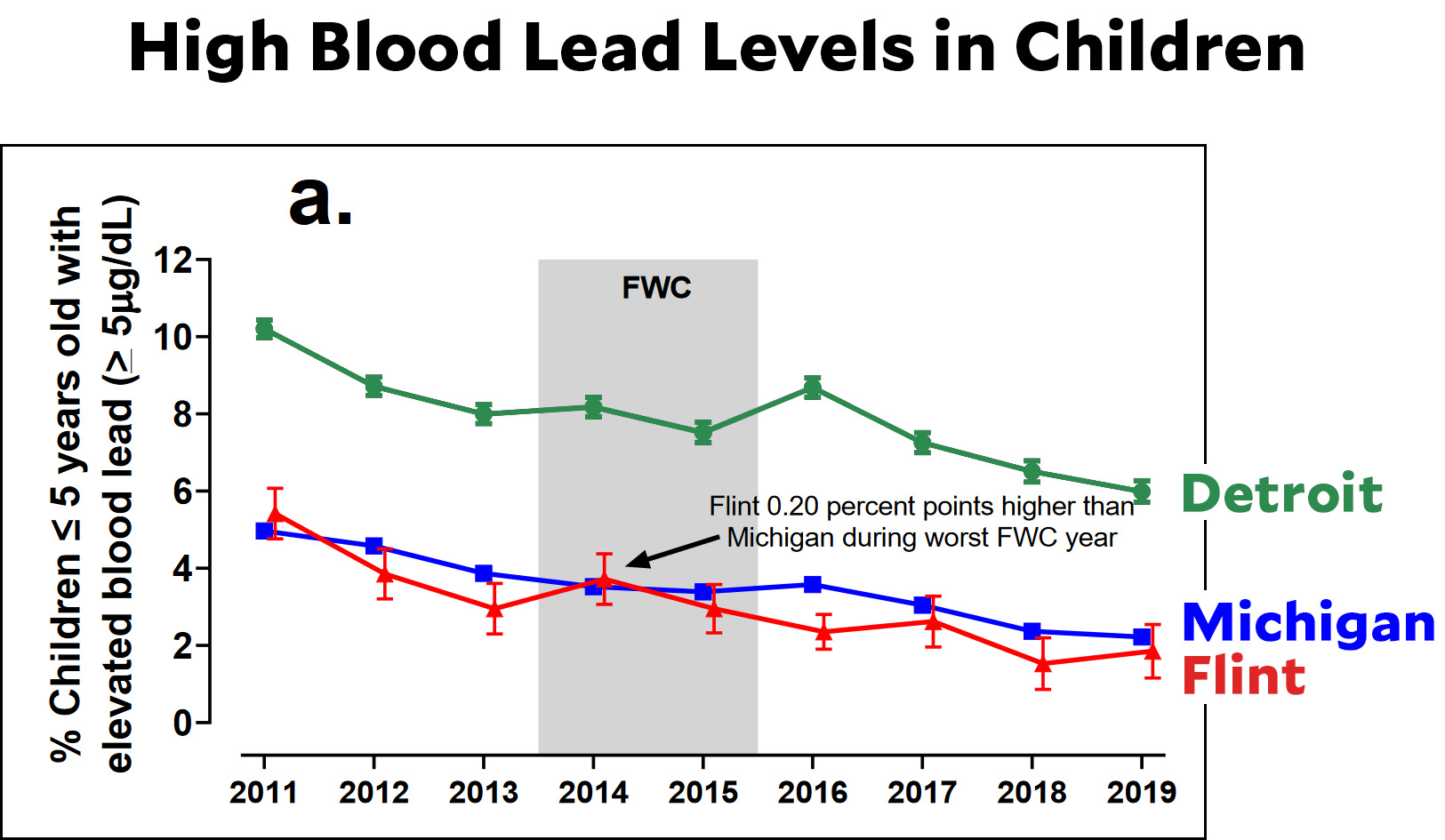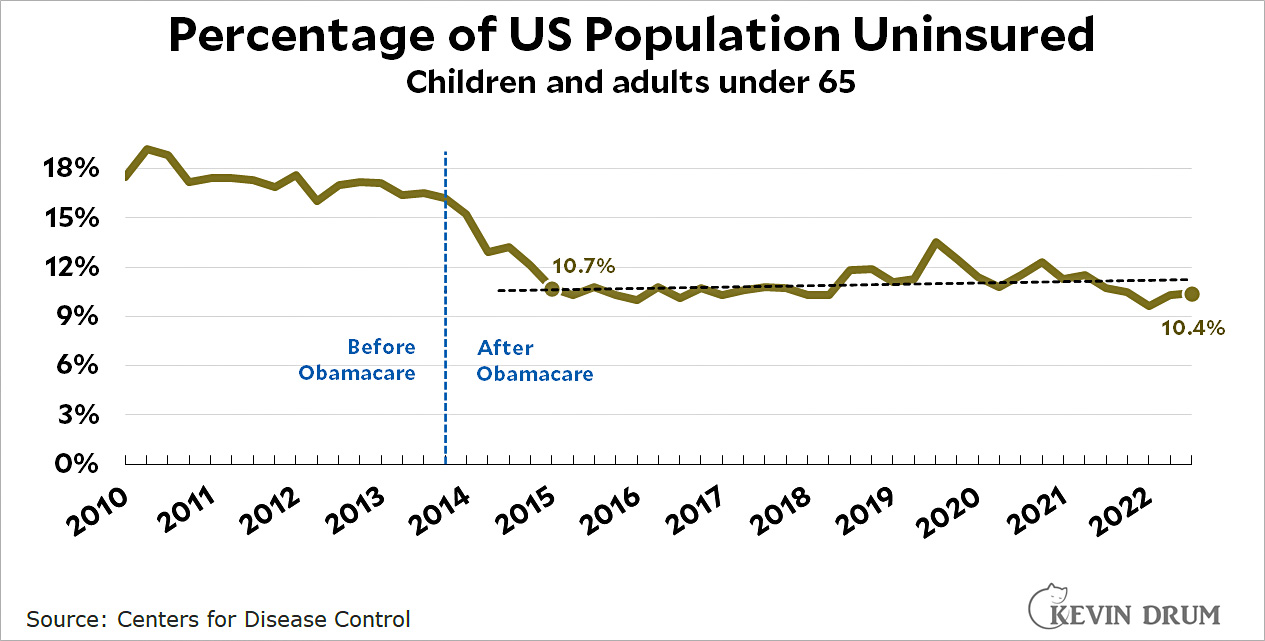I've written many times about the Flint water crisis, and after all the data was in my conclusion was pretty simple:
- The screw-up with Flint's water was a terrible tragedy that never should have happened.
- However, in the end there was little damage done. Lead levels never got all that high and the problem was fixed fairly quickly. There were probably no more than a handful of children who were seriously affected.
To this day, conventional wisdom is just the opposite: namely that lead levels in children skyrocketed and produced a huge spike in special education. One of the scientists who was among the first to sound the alarm over Flint was transformed from hero to villain in a heartbeat when he declined to go along with this.
He's back now with some co-authors to take a retrospective look at what happened. Here's the key chart:
 Even at the height of the crisis, testing in children showed blood lead levels that were essentially the same as the Michigan average and far lower than Detroit, which had a safe water supply the entire time. During the whole of the crisis (which encompassed 18 months in 2014-15), the number of Flint children with elevated lead levels was 3.9%. In Detroit it was 8.1%.
Even at the height of the crisis, testing in children showed blood lead levels that were essentially the same as the Michigan average and far lower than Detroit, which had a safe water supply the entire time. During the whole of the crisis (which encompassed 18 months in 2014-15), the number of Flint children with elevated lead levels was 3.9%. In Detroit it was 8.1%.
Why does this matter? It's simple: continual panic over a nonexistent crisis is bad for residents, who have lived for years with elevated outrage and stress, and bad for their children, who internalize the idea that they're going to grow up stupid.
But if the crisis was never that bad, what's with the spike in special education? That's what the new paper is about:
Did a nocebo effect contribute to the rise in special education enrollment following the Flint, Michigan water crisis?
A nocebo effect is when someone experiences a negative effect merely because they expect it, not because there's any concrete underlying cause. The authors conclude that this is indeed what happened in Flint:
Despite an equal number of overall special education outcomes worsening and improving, only those that superficially appeared to be worsening were publicized in the media. Our detailed analysis shows these outcomes are insignificant or inconsistent with the actual lead exposure that occurred. Specifically, the seven-fold jump in suspension/expulsion rates of special education students had occurred in 2013-14 before the onset of the crisis.
....A nocebo effect is consistent with the trend of rising special education enrollment after the [Flint water crisis] was exposed. As a top news story of 2016, the crisis engendered negative psychological effects described by residents as “Flint fatigue,” and the surrounding international media coverage has continued for over five years with negative headlines. The news reports and their popularity on social media and negative perceptions of Flint community leaders and parents could have heightened negative expectations about the effects on children, who readily accept and act on information from those they trust.
This is a tragedy on top of a tragedy. The damage done to children from lead was small, but the damage done from fear of lead may very well be many times higher. Partly this is because the progressive media persistently made heroes of the residents and refused to follow the science, and partly because Flint residents had every reason to distrust politicians and various hired guns who tried to belittle the crisis from the start.
With only a few exceptions, there's nothing wrong with Flint's kids. They should not have to grow up thinking there is.
 If I were Tim Trevan I'd be pissed. Nowhere in his op-ed does he say that scientists got the lab leak theory wrong. He says only that a lab leak is "a possibility" that's "self-evidently plausible."
If I were Tim Trevan I'd be pissed. Nowhere in his op-ed does he say that scientists got the lab leak theory wrong. He says only that a lab leak is "a possibility" that's "self-evidently plausible."








